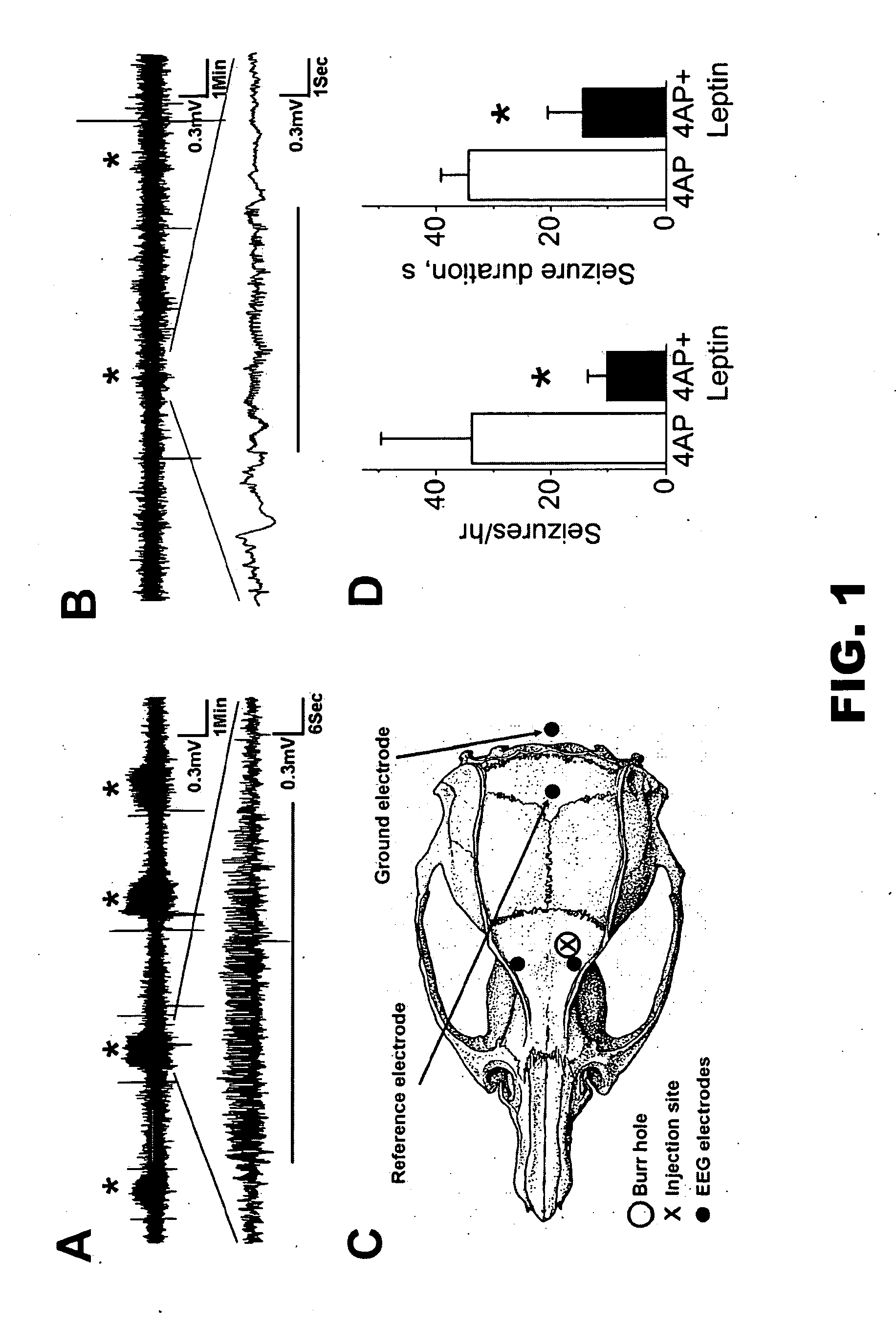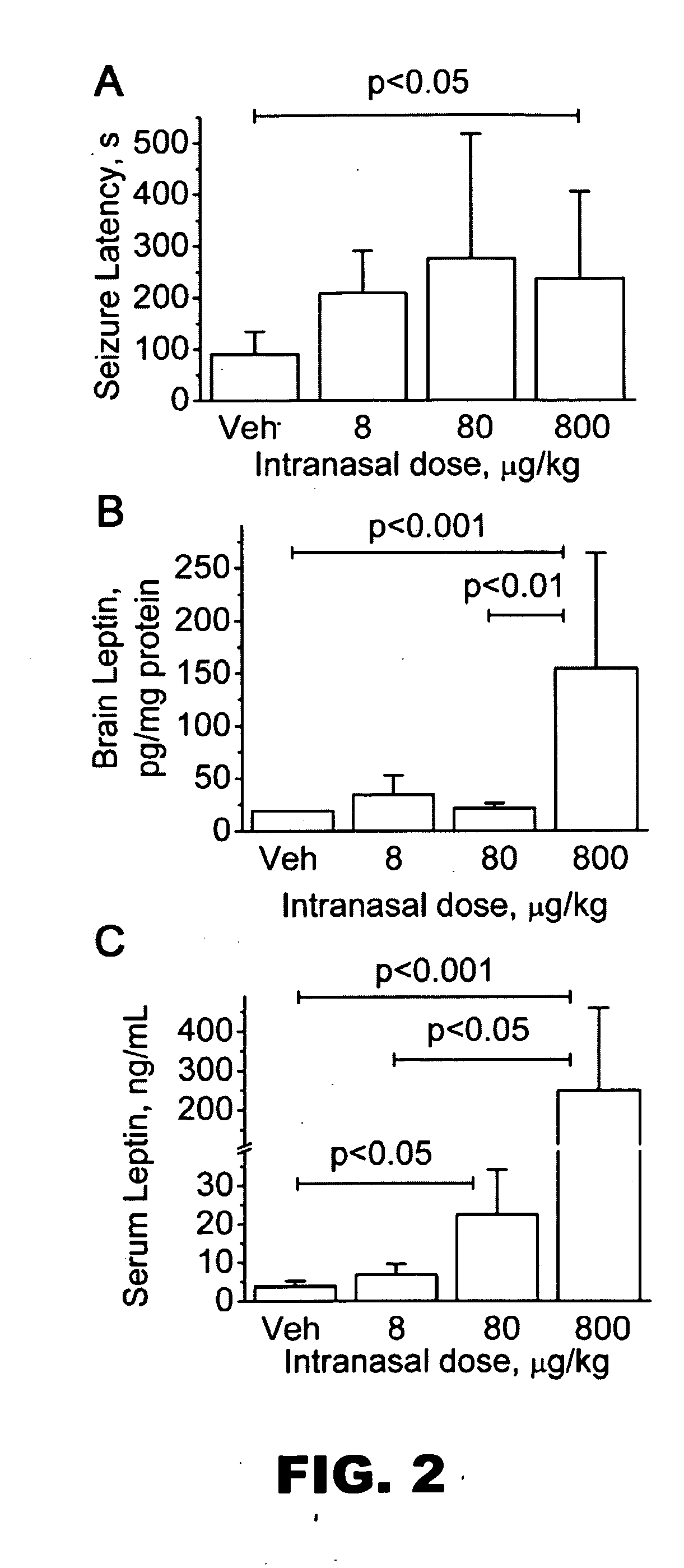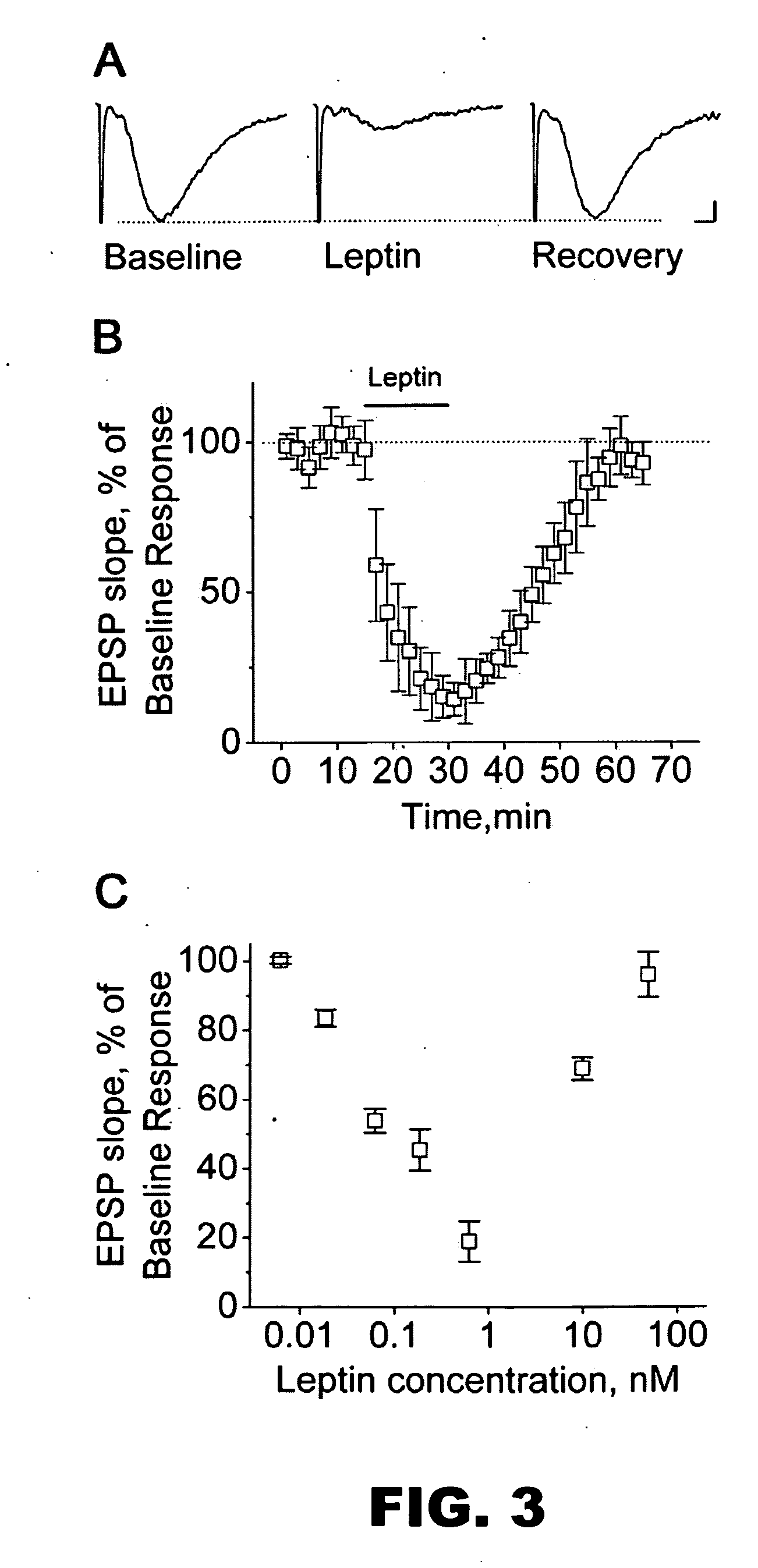Methods of inhibiting seizure in a subject
a seizure and seizure inhibition technology, applied in the field of epileptic and nonepileptic seizures, can solve the problems of limited use of neuropeptides as anticonvulsants, few treatment options, and unexploited potential of neuropeptides, and achieve the effect of inhibiting seizures and inhibiting seizures
- Summary
- Abstract
- Description
- Claims
- Application Information
AI Technical Summary
Benefits of technology
Problems solved by technology
Method used
Image
Examples
example 1
Leptin Inhibits 4AP Induced Neocortical Seizure in Rats
[0085]4AP, a nonspecific inhibitor of voltage-gated K+ channel, induced seizures that were easy to identify electrographically by their discrete onset, stereotypically evolving amplitude and frequency features, and abrupt cessation (FIG. 1A). Electrographic seizures in rats co-injected with 12.5 nanomoles of 4AP+39 picomoles of leptin were lower amplitude and noticeably briefer and less frequent compared to the rats injected with 12.5 nanomoles of 4AP+vehicle (FIG. 1, B and D). Leptin decreased the cumulative seizure duration, defined as the total duration of ictal activity between 30 and 90 min post 4AP injection, from 19±9.3 min (n=5) to 2.6±1.7 min (n=5, p<0.001, t-test). Leptin did not eliminate interictal spikes.
example 2
Intranasal Leptin Administration and Pentylenetetrazole-Induced Seizures
[0086]Pentylenetetrazole (PTZ), a γ-aminobutyric acidA receptor (GABAAR) antagonist is a chemical convulsant that reliably produces generalized convulsive seizures (clonic-tonic) when administered intraperitoneally (IP). The rodent PTZ seizure model has a quantifiable seizure onset latency, easily recognized behavioral seizures, and predictive value for anticonvulsant efficacy against generalized seizures in humans. Therefore, the PTZ model is a standard animal seizure model according to the NIH / NINDS Anticonvulsant Drug Development (ADD) Program (Stables et al., 2002). To determine if leptin inhibits seizures in this model, the inventors gave leptin intranasally (IN) to CD-1 mice 30 minutes before giving 75 mg / kg PTZ IP. A leptin dose of 800 pg / kg more than doubled the seizure latency compared to control (FIG. 2A). Leptin doses of 8 and 80 μg / kg also increased seizure latency, but the differences were not stati...
example 3
Brain and Serum Leptin Levels After IN Leptin Administration
[0087]The inventors observed that serum and brain leptin levels increased 30 minutes after IN leptin administration. Dramatic increases in serum and brain leptin levels occurred 30 minutes after an 800 pg / kg IN leptin administration (FIG. 2B, 2C). Leptin doses of 8 and 80 pg / kg produced smaller increases in serum and brain leptin levels. All brains of mice receiving 800 pg / kg leptin showed leptin levels above 20 pg / mg protein. The brains of some mice receiving 8 and 80 pg / kg leptin showed levels below 20 pg / mg protein. All vehicle treated mice had brain leptin levels below 20 pg / mg protein.
[0088]Serum and brain leptin levels varied with the type of anesthesia used during the IN leptin administration. Brain and serum leptin levels were lower when leptin was administered with halothane compared to ketamine anesthesia for technical reasons. Inhaled halothane anesthesia had to be discontinued during IN leptin administration. Co...
PUM
| Property | Measurement | Unit |
|---|---|---|
| Fraction | aaaaa | aaaaa |
| Dimensionless property | aaaaa | aaaaa |
| Dimensionless property | aaaaa | aaaaa |
Abstract
Description
Claims
Application Information
 Login to View More
Login to View More - R&D
- Intellectual Property
- Life Sciences
- Materials
- Tech Scout
- Unparalleled Data Quality
- Higher Quality Content
- 60% Fewer Hallucinations
Browse by: Latest US Patents, China's latest patents, Technical Efficacy Thesaurus, Application Domain, Technology Topic, Popular Technical Reports.
© 2025 PatSnap. All rights reserved.Legal|Privacy policy|Modern Slavery Act Transparency Statement|Sitemap|About US| Contact US: help@patsnap.com



